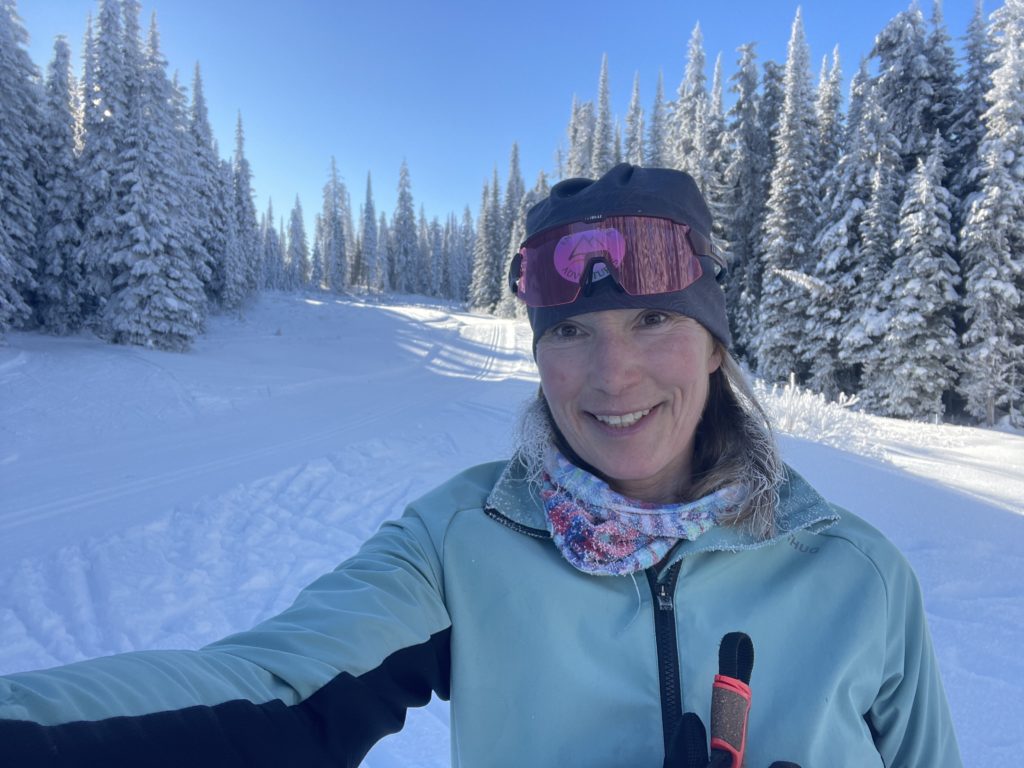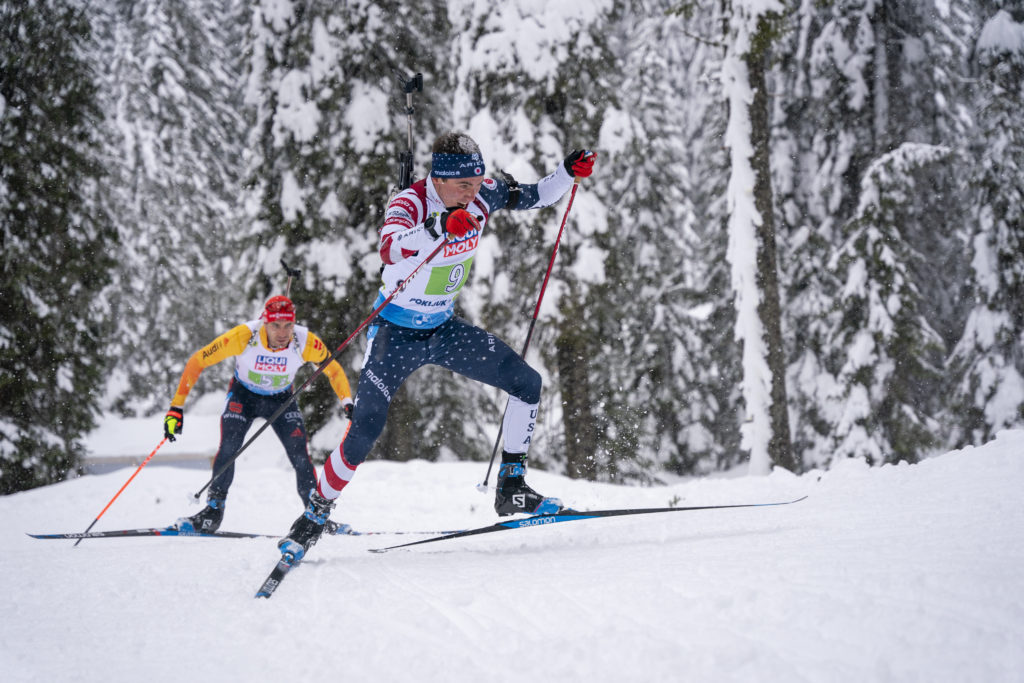
The Story of Jake Brown’s Journey to the U.S. Biathlon Team
Biathlon racing is one of the most popular winter spectator sports in Europe, yet it is often overlooked in the U.S. sports media. Many of you may not know that the 2024 IBU World Cup will be back on home turf at Soldier Hollow, Utah this coming March 8 -10th. Endurance Adventures desires to bring more awareness to the U.S. general public on the sport of biathlon. I recently had the opportunity to interview one of Minneapolis’ homegrown U.S. National team biathletes and Olympian Jake Brown.
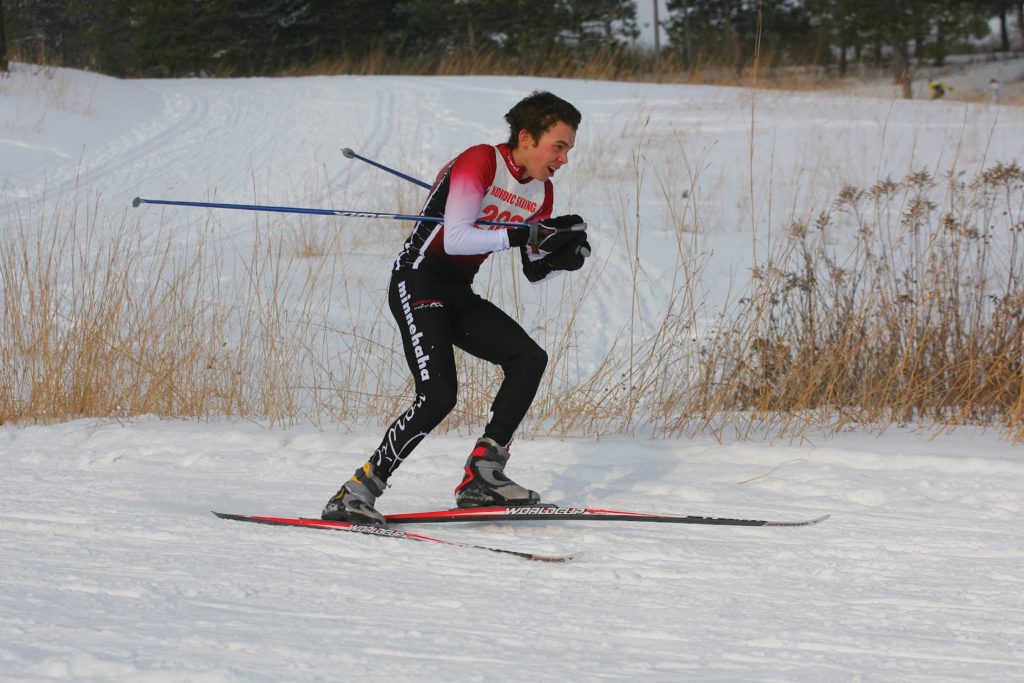
Jake shares his early beginnings of Nordic skiing and his journey into the sport of biathlon. I had the privilege of getting to know Jake during his early years as a ski racer. When I was the program director of the Loppet Fast Kids ski program (now called Trail Kids), Jake and his brother Luke became some of my first coaches in 2012. It has been a pleasure to watch Jake develop as an athlete throughout his collegiate racing years and now as a U.S. Biathlon Team member. Before sharing Jake’s story, I will provide you with an overview of U.S. Biathlon history.
U.S. Biathlon History 101
When looking into the history of U.S. Biathlon, I learned that both Norway and the U.S. founded the sport through military training. Biathlon in the United States can be traced back to the establishment of the U.S. Army’s 10th Mountain Division at Camp Hale, Colorado in 1943. It provided the starting point of biathlon skills when a group of Finnish veterans of the Winter War with the Soviet Union arrived at Camp Hale as instructors for winter tactical training on skis. The first U.S. Biathlon race took place in 1956 in Switzerland. A few years later in 1958, the United States was one of seven nations that participated in the first World Biathlon Championships at Saalfeden, Austria.
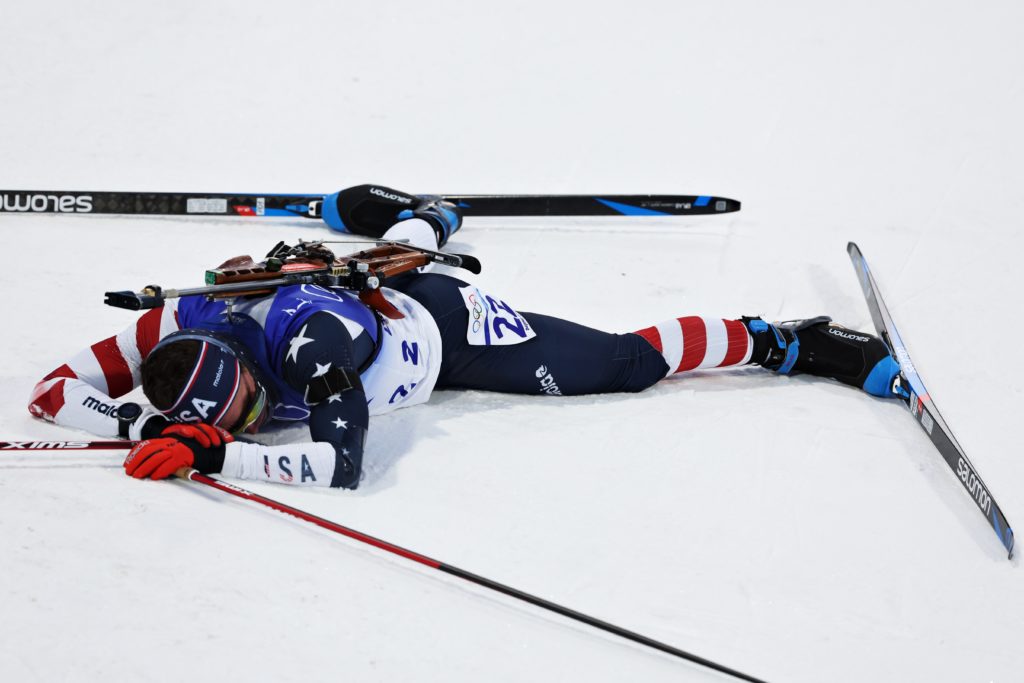
The sport of biathlon was welcomed into the Olympic Games in 1960. The U.S. has hosted the Winter Olympic Biathlon and World Biathlon Championships multiple times but only recently has the public become aware of this exciting and unique sport. In 1980, thirty-three nations competed in the biathlon Winter Olympic Games at Lake Placid, more than any other Olympic Sport. For more information visit the history section on U.S. Biathlon Website.
Jake’s Early Racing Years
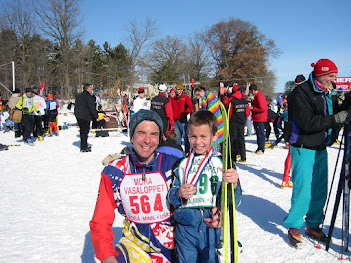
Jake’s parents moved to Minnesota in their late 20s and quickly discovered that cross-country skiing was a great way to stay in shape and also enjoy nature during the winter. His father especially enjoyed the marathon racing component and eventually worked his way up to make the first wave in the Birkie. Jake was introduced to cross-country skiing by his parents in their Minneapolis backyard at age three. Jake has fond memories of racing with his brothers in the Mora Vasaloppet Miniloppet youth race.
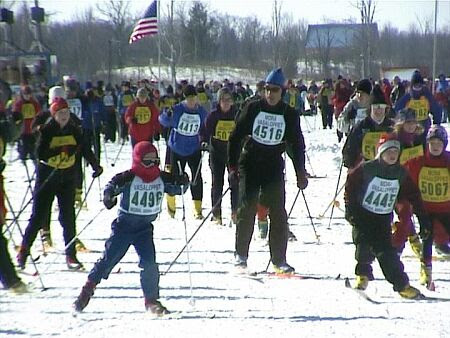
“I’ll never forget my second-grade Mora Miniloppet. I was classic skiing on fish scales and got passed by some kids skate skiing. I tried to skate on my fish scales during the event, but couldn’t quite figure it out. The next year I asked for a pair of real skate skis for Christmas and started skate skiing. I never really classic skied again until high school when I had to, and it showed in my racing all through college. Thankfully, biathlon existed for me,” shared Jake.
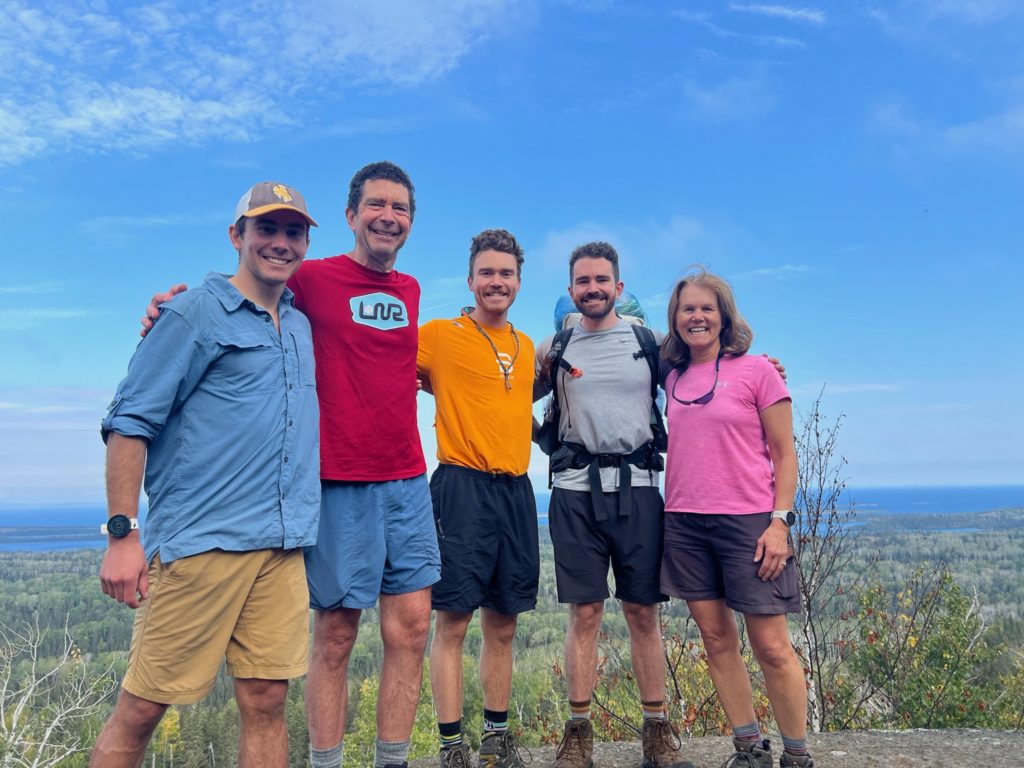
Jake’s claim to fame the following year was beating Jessie Diggins in the 13 km Mora Vasaloppet event. The fame was short-lived since this was the last time he beat Jessie in a race event until his senior year of high school. During Junior high, Jake participated in the Minnesota Valley Junior training group (a precursor to LNR) three days a week in the summers.
“Some of my most fond memories during this time were the early morning 7 – 9 a.m. Saturdays cross-country skiing sessions at the Hyland Hills Downhill Ski Area. After ski practice was done, I switched into my snowboard gear and was on the slopes until dusk. After dinner, I would play hockey with my brothers on our backyard ice rink. We just kind of went all day, and skiing was a tiny part of it,” said Jake.
Before 10th grade, Jake joined Piotr Bednarski’s training group called GoTraining! (another LNR precursor). He enjoyed learning about the different types of training, periodization, and strength training. In high school Jake ski trained in the summer, ran during cross-country in the fall, ski raced in the winter, and ran track in the spring.
Jake shared, “I never did make a Midwest Junior Nationals team, and not for lack of trying. I didn’t have much skiing success until late my senior season of high school when I finally started to grow a little. The club system also wasn’t quite as developed in MN as it is now, so I was often waxing with my dad before the races.” As a senior, Jake finished 3rd in the Minnesota State High School competition.
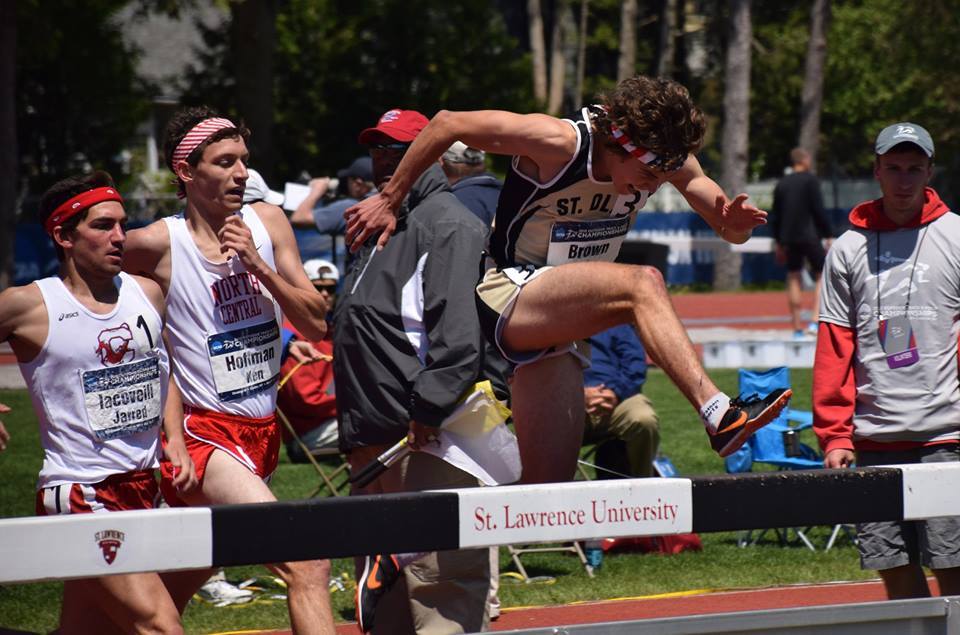
Jake’s College Racing Years
The summer before Jake’s Senior year at St. Olaf he attended a study abroad program in Norway. He explored the trails right from Oslo dreaming of the great skiers who had done the same. “I randomly met Eldar Rønning, a star at the time, while in Trondheim. I thought it would likely be my only chance to visit Norway as a skier. I was lucky to be wrong,” shared Jake.
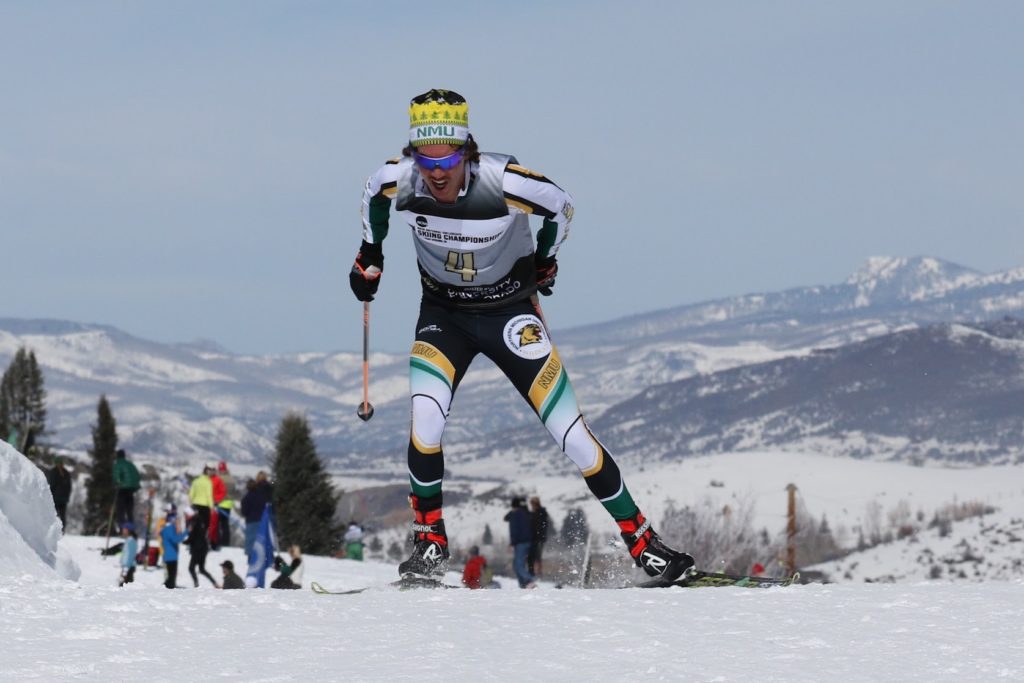
Jake took a brief departure from ski training while attending Princeton. The following year he decided to take a gap year to explore jobs and careers. During this time he returned to ski racing and ended up placing 16th in the American Birkebeiner. Jake transferred to St. Olaf College to study science and competed on both the running and Nordic ski teams. “Running at Olaf was a huge highlight. We had an incredible team and I ran way faster than I had at Princeton, which was largely due to a more balanced running training with ski training, making it more mentally sustainable,” shared Jake.
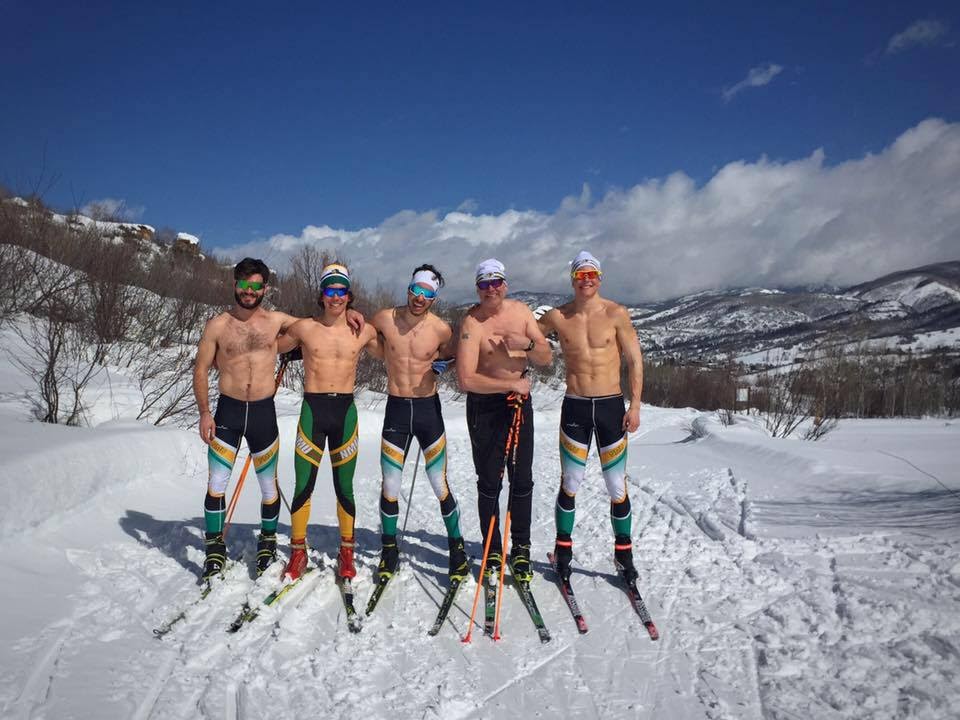
After graduating in 2015, Jake joined the Northern Michigan University ski team as a graduate student and finished his NCAA career with a top-5 finish at US Nationals. The NMU team provided world-class teammates like Adam Martin, Freddy Schwenke, Kyle Bratrud, and Ian Torchia along with coaching from Sten Fjeldheim and Shane McDowell. The NMU Men’s Nordic Team took the overall title.
The Journey Into Biathlon
In 2015, Jake responded to an ad in Fasterskier for a US biathlon Talent ID camp. Jake was accepted to the camp and drove out to Lake Placid with a fellow 2015 Midwest grad named Paul Schommer. Jake explained, “We did all sorts of tests and learned to shoot. I loved the sport more than I thought I would and appreciated the professionalism of the team and coaching. After my results at NMU, they offered me the chance to move out to Lake Placid, live at the Olympic Training Center, and give biathlon a full try.
Biathlon Training
Jake focuses on his shooting training for around ten hours per week. By the winter, Jake is on snow practicing shooting with his skiing about five sessions each week. “Shooting requires a lot of focus, and you don’t want to build bad habits. For skiing, we train probably just a little less than XC skiers at a similar level, simply because of the added nervous system fatigue from shooting. My lowest years for physical training have been just over 700 hours and my biggest just under 850”, shared Jake.
Jake found biathlon racing more appealing than Nordic ski racing. “Biathlon racing is addicting. Biathlon adds a deeper level to ski the perfect race and to channel this beautiful mental focus into turning the targets over. In biathlon, you feel more. When you get it right, it’s poetic,” said Jake.
“Seemingly unknown to the American ski community, it also is so much more professional in Europe. While in Sweden and Finland, biathlon still feels a little like XC skiing’s little brother similar to the US, everywhere else biathlon is king (except Norway, where both are giants, with biathlon bigger on TV but Holmenkollen packed deeper for XC). More countries take biathlon more seriously than Nordic skiing. Biathlon often has 25 countries fielding relay teams, compared to 15 teams at a Nordic FIS World Championship event. The IBU ( International Biathlon Union) is an excellent governing body, and the trickle-down results in better events, better fan experiences, more nations getting into the sport, and better athlete support. It’s an exciting thing to be a part of,” shared Jake.
Craftsbury Green Racing Project

After two years with the US Biathlon development program, Jake joined the Craftsbury GRP Biathlon team in 2018. Jake enjoys training with his brother Luke on the same team at Craftsbury. “We have different strengths and support each other in different ways. We push each other and root for each other, but the best thing is just to have a close friend who’s always known you,” shared Jake.

Jake enjoys the balance of training and giving back to the community in Vermont. As an athlete with Craftsbury, there are so many opportunities to be involved with the Outdoor Center or the local community. The Outdoor Center requires athletes to complete several work hours in exchange for our support. Over the last two years, Jake has been working with the local ambulance service and helping run biathlon camps.
“Financially, Craftsbury covers any race expense that US Biathlon doesn’t, and we are given room and board. The community support is also deep; it’s so cool to have rowers, staff, and families cheering for you. The location is fantastic for biathlon. I love training in Vermont; the gravel roads and endless rolling terrain, at sea level, are optimal for me. The venue is only a three-hour drive from National Team training camps in Lake Placid,” said Jake.
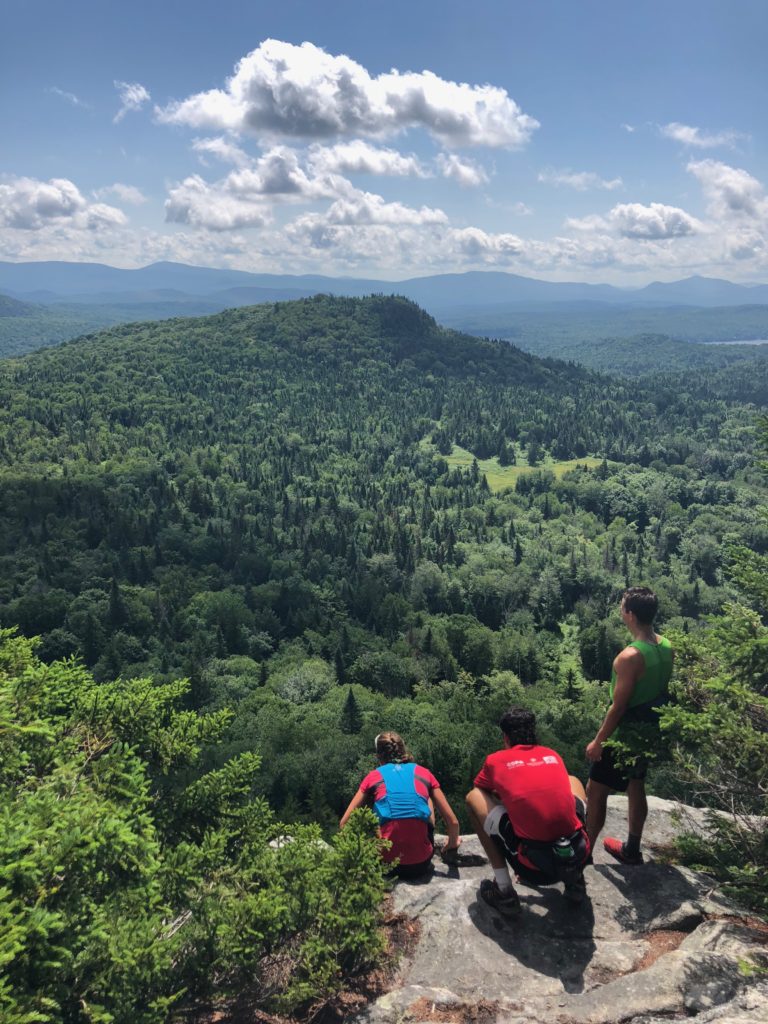
Jake is also financially supported by the USOPC ( United States Olympic and Paralympic Committee) with a monthly stipend based on his past results. US Biathlon supplements this with 50% of USOPC’s monthly stipend; they see this as necessary due to both inflation and because USOPC hasn’t given athletes a “raise” in years.
US Biathlon also covers all World Cup race expenses, plus National Team camp expenses to a certain level depending on team status. Craftsbury Green Racing Project supports Jake by covering the extra-international team travel or domestic race expenses that aren’t covered by US Biathlon.
“ I’m fortunate to be well-supported by my ski clubs. I share this because I think it’s important that athletes know that there are pathways that they can find to be supported after college. For me, it didn’t happen overnight, but I was lucky to have my results pick up at the right time,” shared Jake.
World Cup Racing Years
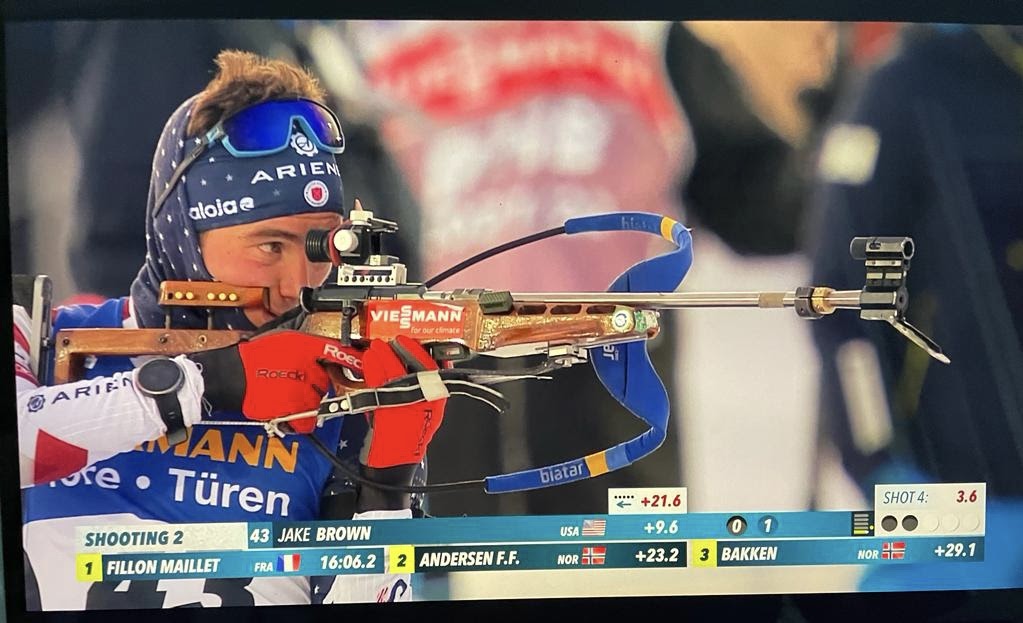
2022 Finland World Cup
Jake’s first time racing the World Cup was in 2018 at Hochfilzen, Austria. “ I raced the anchor leg for the relay and I remember shaking during zero (when we shoot the rifles and adjust the sights before training), but shot respectably during the race, with two misses. The stadium was packed, and fans lined the walls of the course five deep. I finally understood why everyone was raving about biathlon in Europe,” shared Jake.
Jake’s favorite race venue in Europe is Ostersund, Sweden. “It reminds me of northern Minnesota, Wisconsin, or Michigan. Lots of varying terrain, good hills, and not a lot of flat, which is my kind of course. Unfortunately, it doesn’t get that many fans in comparison, but I kind of like it peaceful anyway, said Jake.
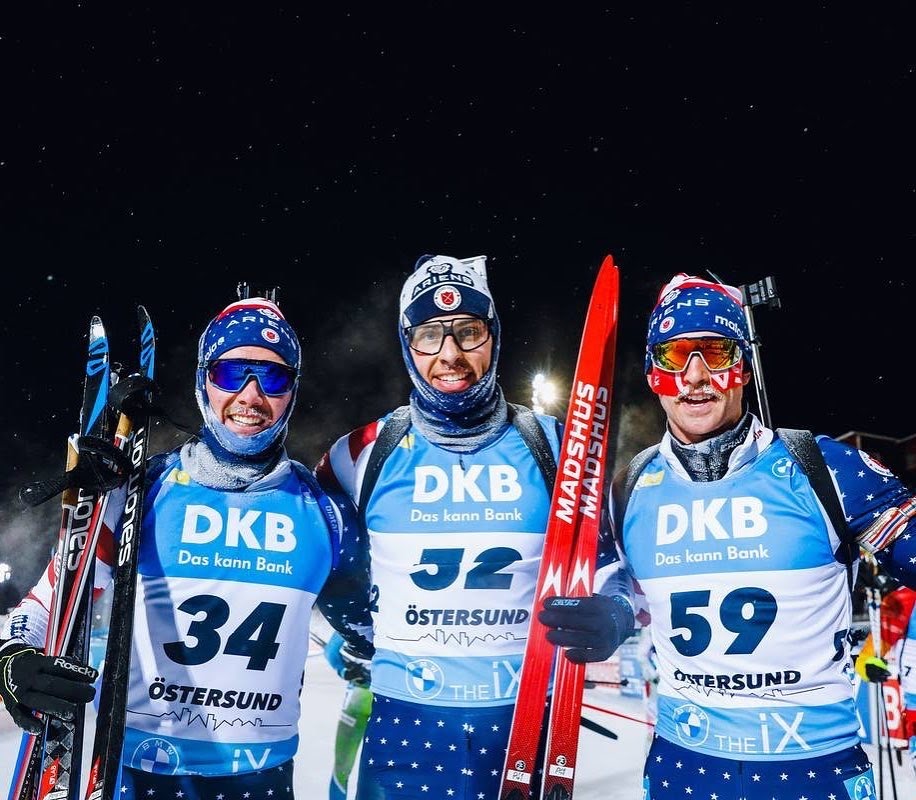
In 2020, Jake raced at Antholz, Italy which is the most prestigious venue and most beautiful location on a lake near the Dolomites. A highlight for Jake was racing as the anchor in a relay to finish 8th. Oddly, the 2021 Covid year was Jake’s best season to date. He missed making only one pursuit, landed a top-15 at World Champs, and several top twenty and thirty finishes. “Our team bonded well during Covid and our coach, Vegard Bitnes, became sort of like a father figure to us. After three seasons with us, he is no longer our coach, but I still consult him if I run into a personal or professional problem I need guidance on,” shared Jake.
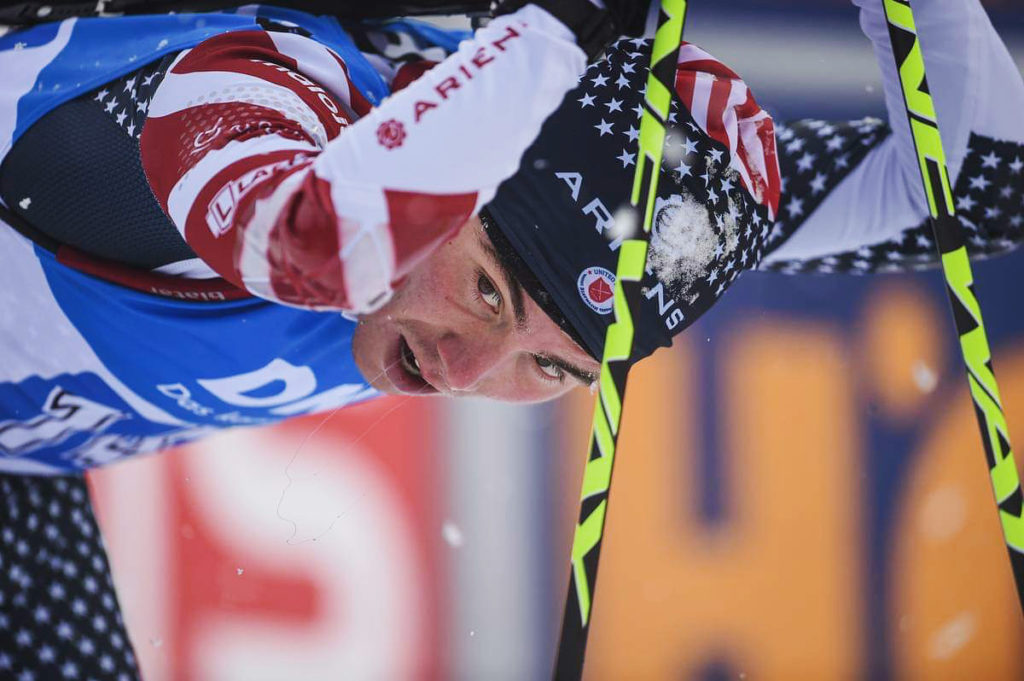
Jake enjoys racing in Oberhof, Germany because it is one of the biggest spectator biathlon events in Europe. “German biathlon fans are crazy, albeit most of them are also a little old and like their cheese stinky”. Unfortunately, in 2023 I caught COVID-19 two days before the first race and spent the championships isolating in my room. It was an awful season and difficult winter for me, and one I’m ready to put behind me,” said Jake.
Jakes Biathlon career highlights include:
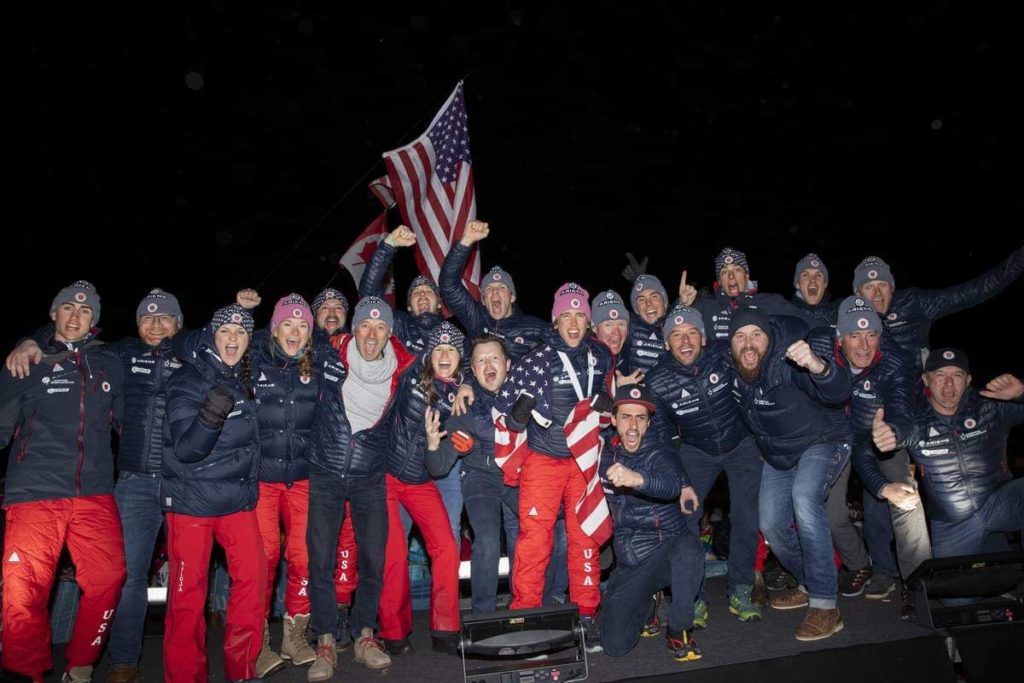
- 12th in the 10km sprint at the World Championships in Slovenia in 2021
- Getting called up to the World Cup and racing the next day after a surprise top 15 IBU Cup finish early in my career in 2018
- 6th place mixed relay in Nove Mesto, CZ in 2021
- Handing off the 2023 Ruhpolding relay in 5th
- Racing at the 2022 Beijing Olympics
2022 Beijing Olympic Games
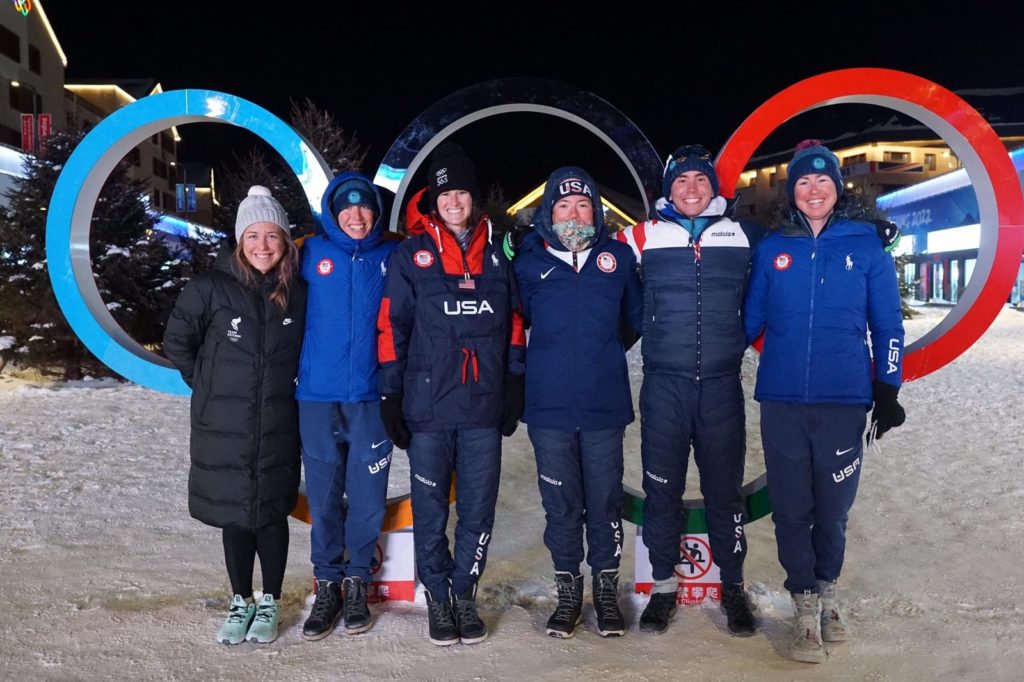
Jake raced in the 2022 Beijing Olympics during the COVID-19 pandemic. “We all needed to do pre-travel tests, of course, and then we were re-tested at the airport, which was closed to the outside world. I’ll never forget landing in Beijing and looking out the window to see the outdoor workers wearing full white bunny suits, safety goggles, and blue booties. Every Chinese worker, from the airport to the Olympic Village, wore that same suit. They looked like minions!” shared Jake.
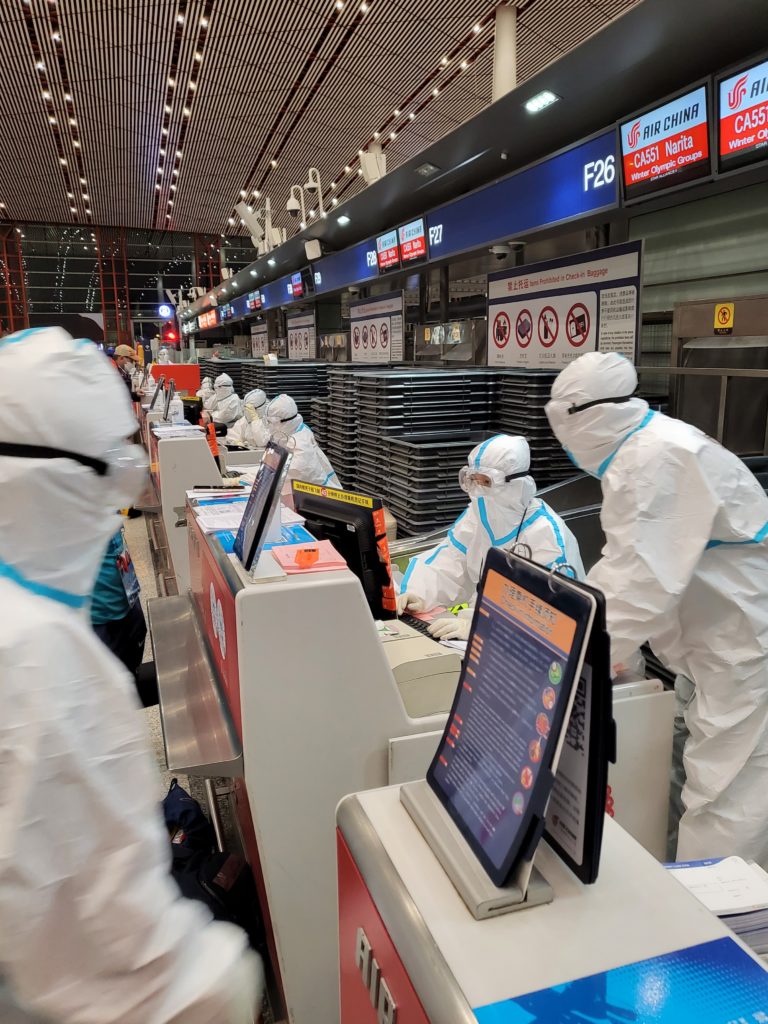
Jake continued, “Only at the biathlon venue did we see Chinese workers wearing anything else! The workers were the champions of the event. They worked so hard, were always friendly, and gave up a month with their family to work the event. The race course in Beijing didn’t feel as natural, and all the venues at our site in Zhangjiakou felt like they were dropped from outer space into the China desert by aliens.”
“The daily COVID precautions were not too invasive from the athlete’s side, as long as you didn’t get COVID-19. I expected to meet more athletes from other sports at the Olympics, especially US athletes, but most teams kept to themselves. I enjoyed meeting other athletes by trading pins (actually considered cool to do)!”
U.S. Biathlon Team
The U.S. Biathlon team has been finishing between 10th and 15th place in the nation’s cup points. “This year I have no doubt we will be extremely competitive for the top 10, if not higher, with a few talented junior athletes joining our senior team. The main difference between our team and other European teams is that we have no domestic circuit and almost no domestic depth to draw from. We rely on fast skiers trying biathlon, whereas in Europe fast biathletes are starting the sport much earlier, usually between the ages of ten to twelve years old. Hopefully in the U.S. youth biathlon grows quickly, but it takes a large investment and infrastructure that has to be matched by an interest in participation,” shared Jake.
“Biathlon World Cups in Europe have tens of thousands of fans at each event. I think most American skiers know that the European sporting public follows Nordic skiing much more closely than does the US. It’s amazing how much more popular biathlon spectating is in Europe, especially on television and in bars and restaurants. Nordic skiing is mostly followed by people who ski, whereas biathlon draws both skiers and ordinary sports fans alike,” said Jake.
Jake explains there are several barriers to the growth of biathlon in the United States. “We have an awesome, growing Nordic ski community to build on. It would be great if already-established Nordic clubs included a little biathlon in their programming. Ultimately, that has to be driven by interest. In my mind, it seems like the American Nordic skier views the sport as inferior, and it doesn’t seem to be encouraged. However, biathlon can be a huge attractor for getting people into skiing. What if more ski clubs saw biathlon as a way to attract a different demographic to skiing and a healthy active lifestyle?
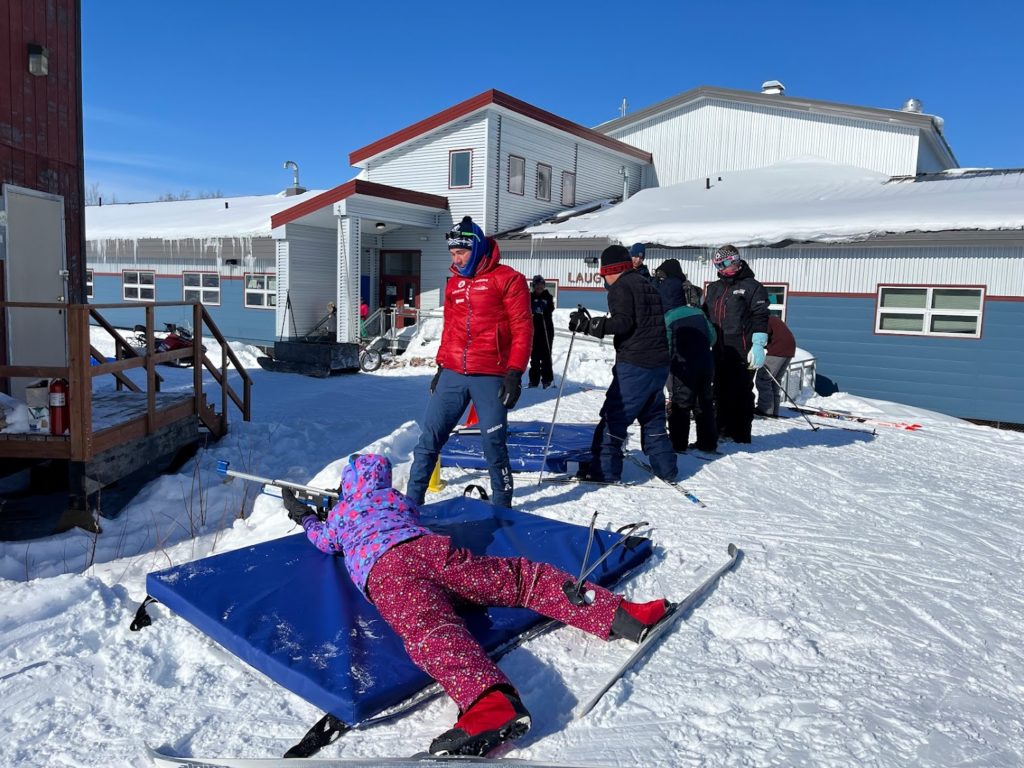
The second barrier is the limited amount of biathlon range courses in the United States. Almost every cross-country ski venue in Europe has a biathlon range. Thirdly, there is the gun issue. We need a better rifle-permitting system in the US. Without it, the safety aspect of biathlon feels a little unprofessional, and I think that perceived unprofessionalism scares a lot of people. I know that Minneapolis, understandably, is very resistant to putting in a biathlon range. Yet even with stricter gun laws, Europe has a very different attitude about rifles when it comes to sport shooting, and biathlon specifically. Biathlon is not seen as a “gun” person sport. In Oslo, Norway there is a biathlon range right in the middle of Holmenkollen Stadium,” shared Jake.
Overcoming Injuries
Throughout his racing career, Jake has had his share of injuries and illnesses. In 2019 he had meniscus surgery. “It’s a bit of a funny and long story, but the day after the surgery I fell and broke my ankle on my other leg. After ten days of “couch prison,” as my brother called it, I spent most of that summer training on a ski erg, first sitting and soon standing, and paddling. I was lucky with the timing and was able to race pretty well by winter’s end,” shared Jake.
In 2022-23 Jake had an unbelievable stretch of illnesses. “In period one I made the mistake of racing way too soon after coming back from sickness. At the time I thought I was smart as I achieved a World Cup personal best despite coughing bouts on the downhills and afterward. But it was the beginning of a huge downward spiral and weakened me for later in the season when I caught strep and COVID. I was not able to race from Jan 13 – March 11, 2023. I spent more time isolated in a European hotel room than I wish upon anyone! I found a few productive things to do and took a class, but it was certainly a mental challenge,” shared Jake.
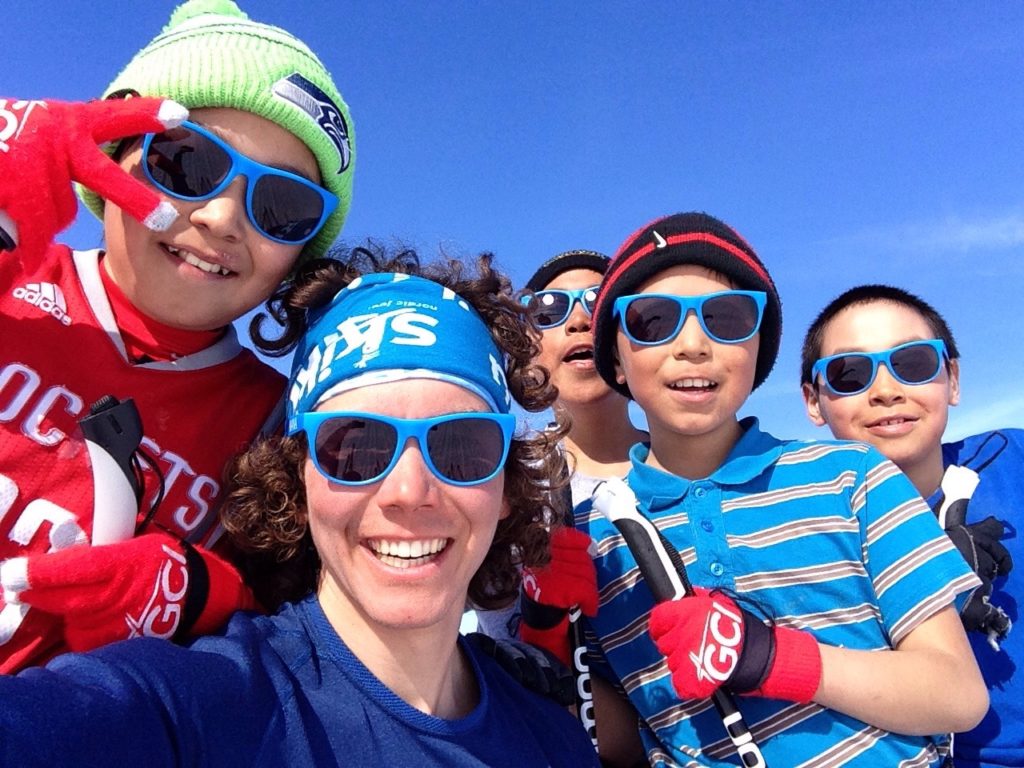
Despite these injuries, Jake continues to stay motivated to train hard. “I think I’m most motivated by curiosity! I’ve always really wanted to see what I can do, to find out what my best performance is. I’m also a bit of a dreamer, so I get excited thinking about trying to achieve something big with my teammates. I try to see setbacks as part of a bigger drama, a story I hope to make as exciting as possible. Yet, at the end of the day, I also just generally enjoy training and striving for the raw satisfaction of knowing I gave my best at the end of a race,” said Jake.
The hardest part of being a full-time professional athlete for Jake is being away from a local community outside of sports. “I love my teammates, but man I wish I wasn’t always leaving home to be at another training camp or traveling to Europe. I wish I could be more involved locally with volunteering, with a church, with family, and with friends outside of sports,” shared Jake.
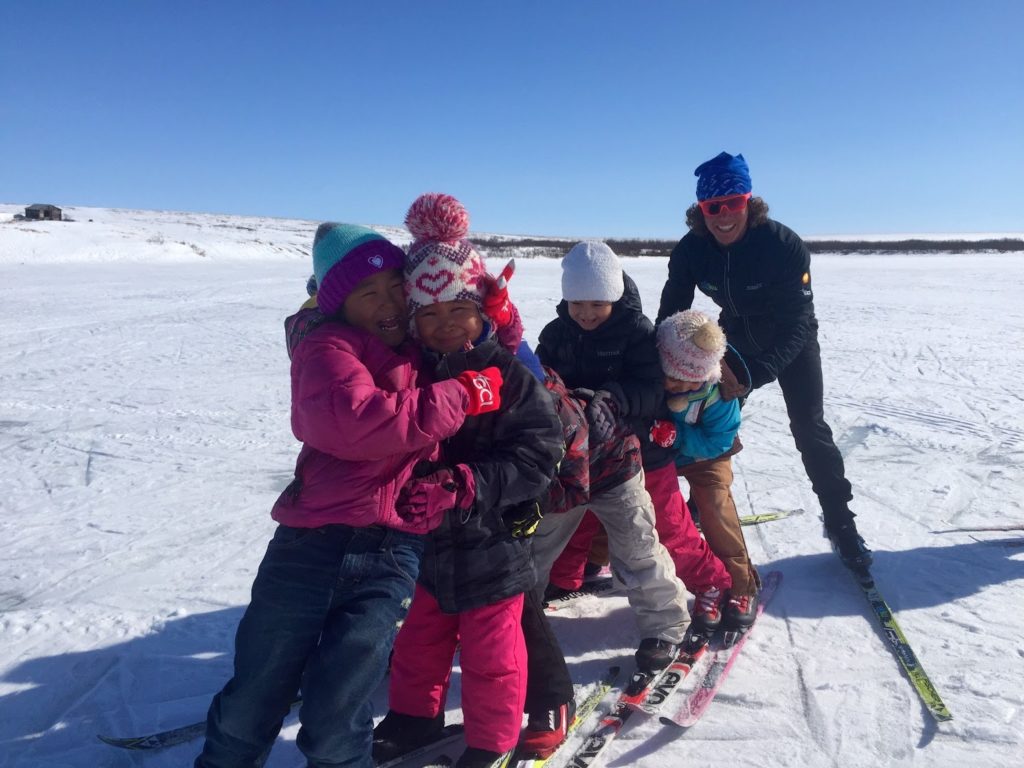
In Jake’s spare time, he has enjoyed taking trips to Alaska teaching youth how to ski through the Skiku program. He also enjoys playing basketball, baking bread, and exploring new gravel trails while training in Vermont. In the future, Jake is interested in the field of healthcare, teaching, and coaching.
Make sure to watch Jake and his teammates race this upcoming season on Eurovision Sports at the following link: Watch Here! You can also download the IBU App for access to real-time data and statistics during every competition, start lists, and results. Download on the Apple Store or Google Play Store.
Kim Rudd
